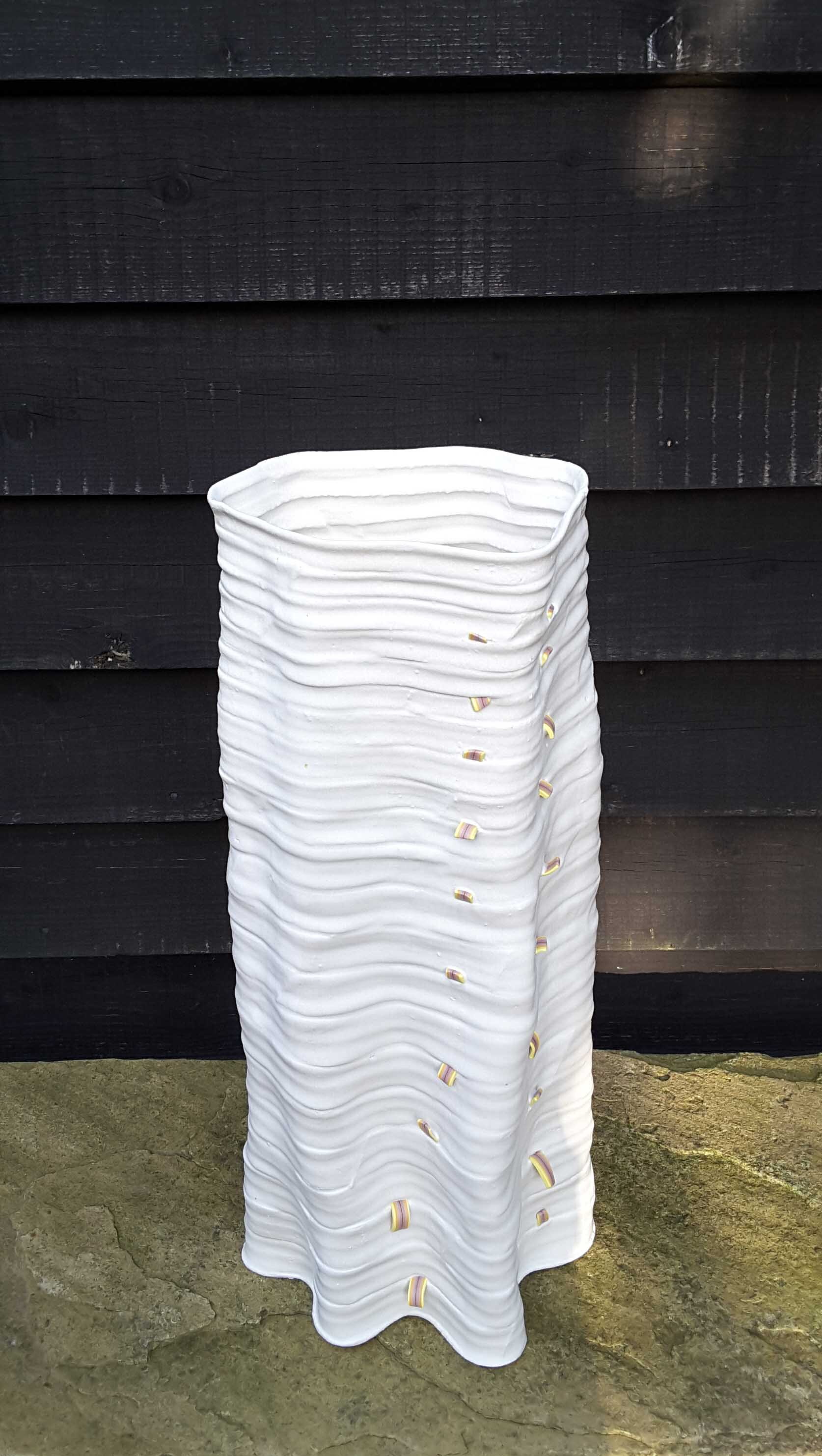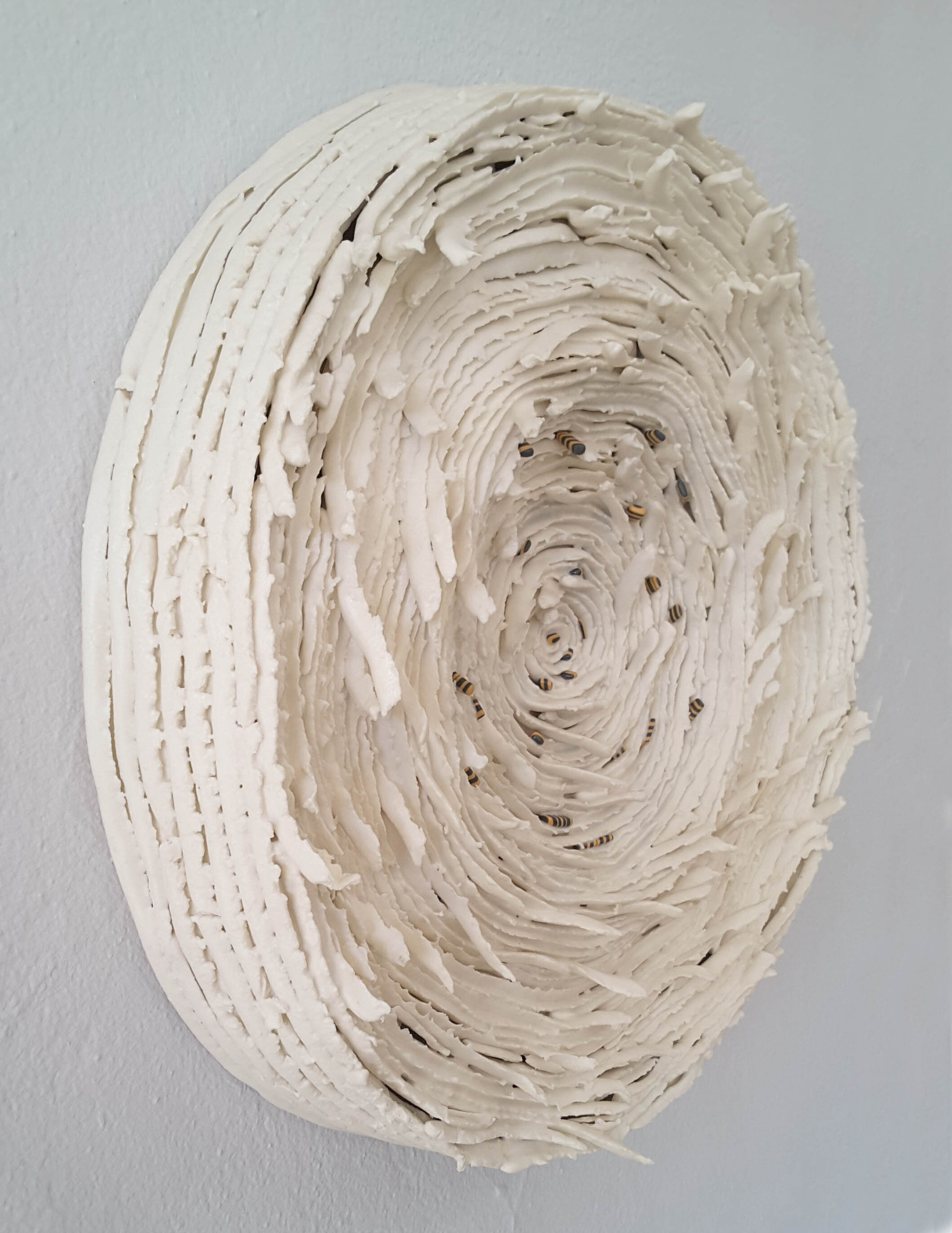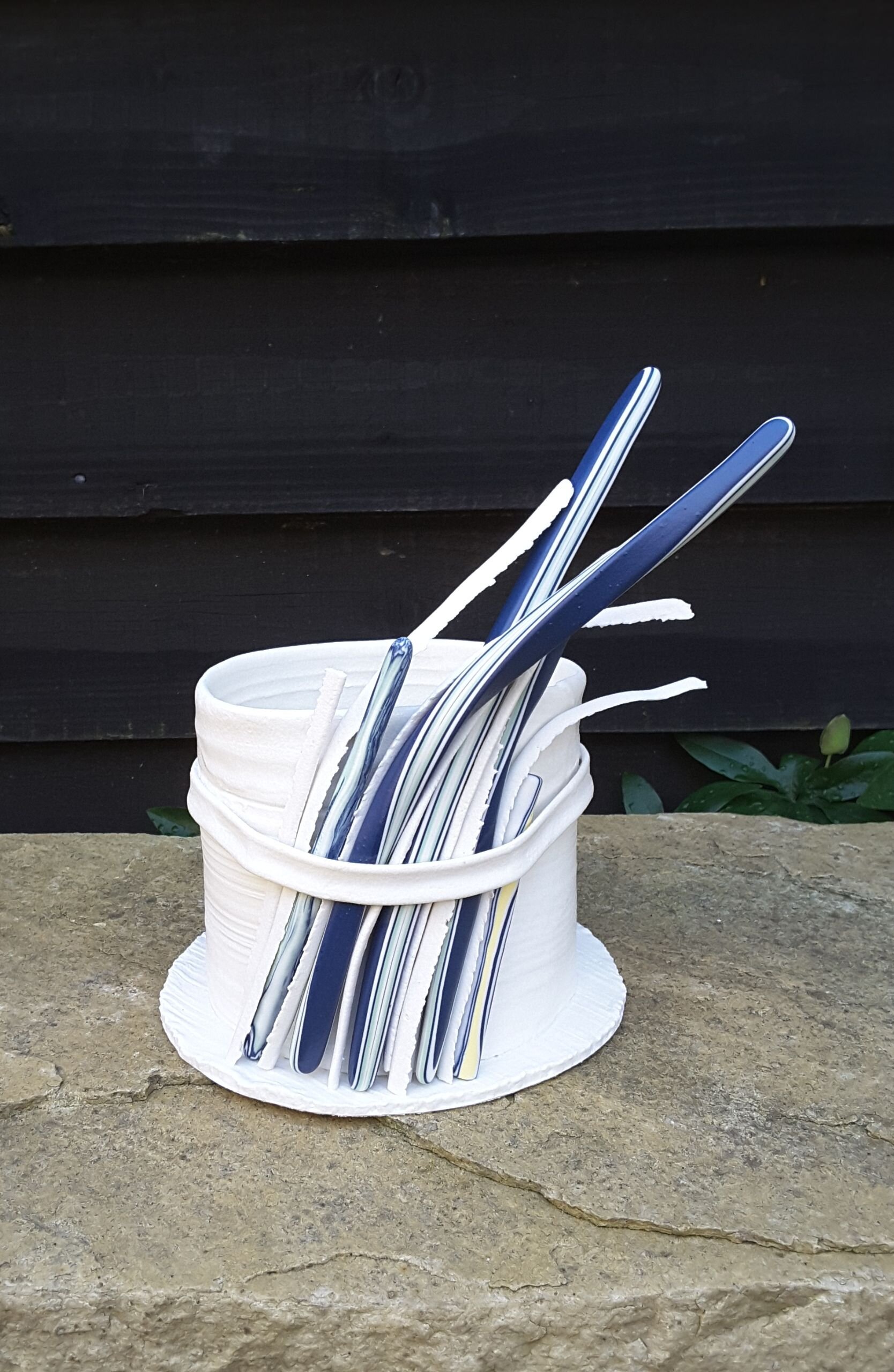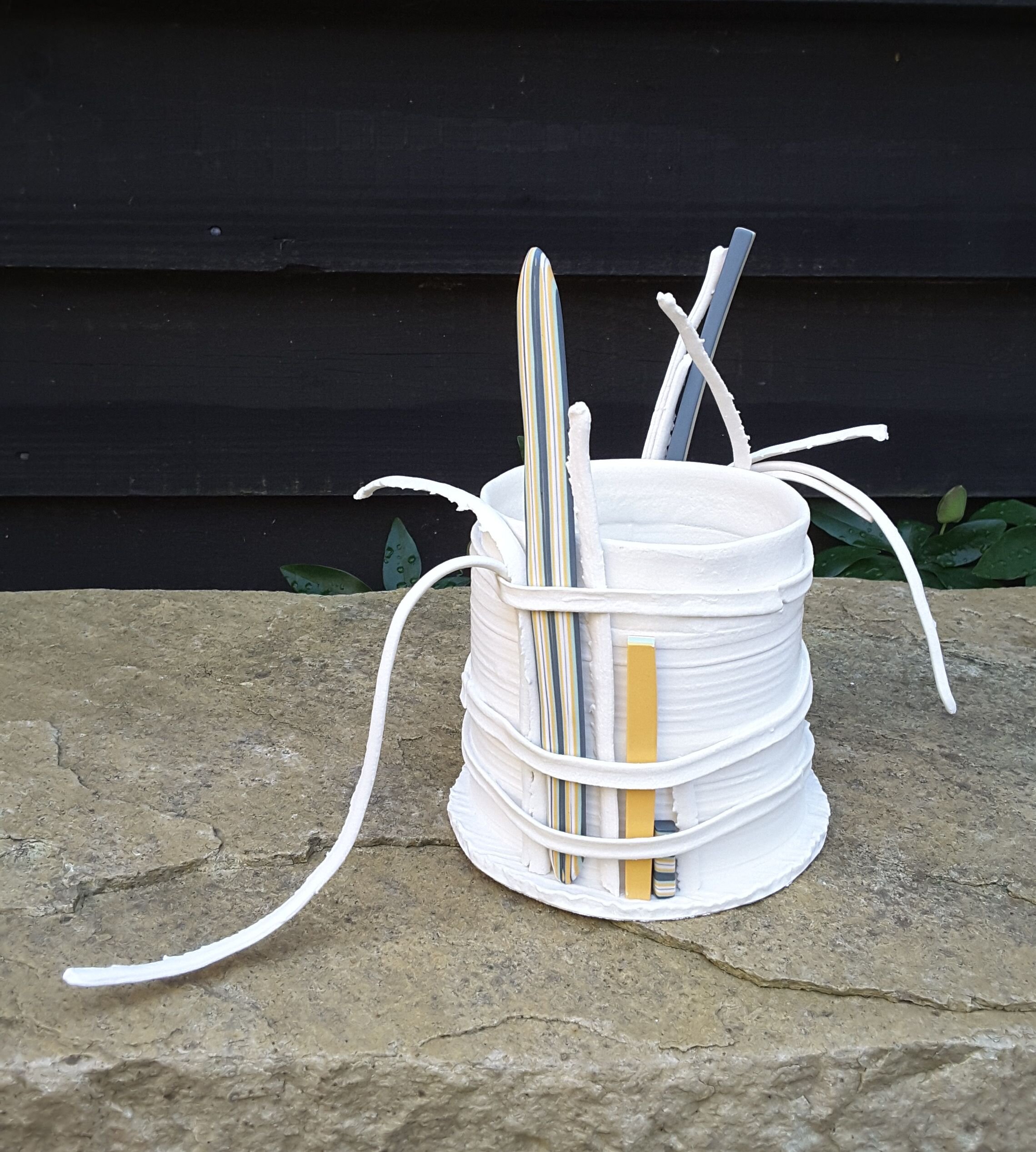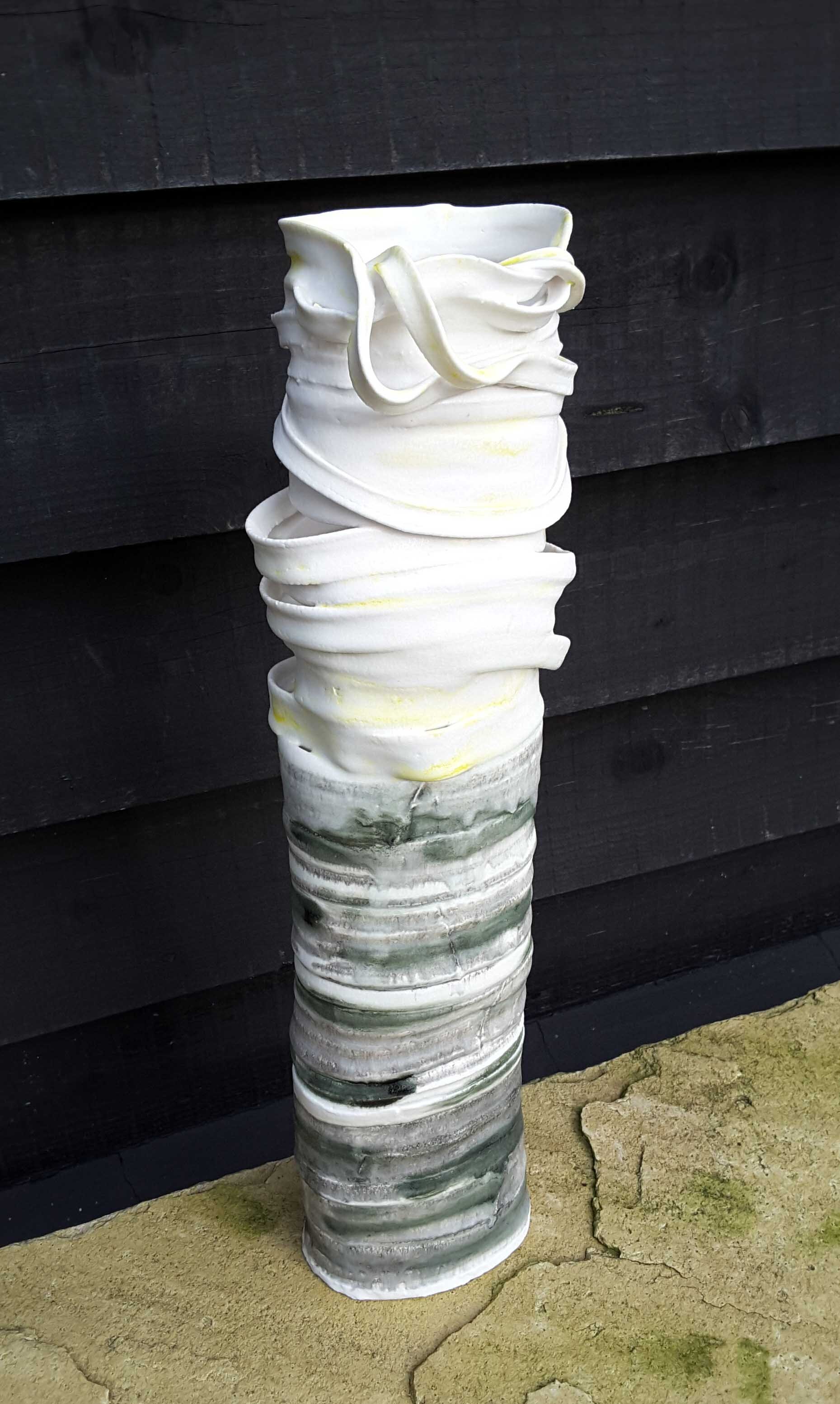KATHRYN HEARN
« Everyone needs to try porcelain paperclay because it is very forgiving clay and has the added delight of translucency and fantastic colour response. »
Where does your inspiration come from? (books, detail at home, nature? I have been inspired by many artists and makers over the years but Abstract Impressionist as a tenent has been an abiding facination. I have been been drawn back to an early inspiring ceramic artist Peter Voulkos whose aggressive and energetic construction of his ceramic sculpture has been seminal because of the his confident and assertive making and lack of fear. My work is constantly been informed by my surroundings, usually intimate landscapes but in recent years since moving to the Cambridgeshire Fens in East Anglia I have been impressed by the extreme vistas where the huge sky meets the liminal flat horizon with strata of colour and atmospheric mists and light. It's an industrial agricultural surrounding which is extremely functional and has a uncompromising narrative.
I really like your latest work, I found it very inspiring those fragile but yet complex line structure. How did you come up with that idea? what does it reflect to you? Thank you, I wanted to reflect this feeling of utility and connect with the farmers and their attitudes. Which I see as a 'make do and mend approach' but also their use of craft without necessarily realising that's what it is! So my works are made with strap handles which potter's often take for granted. It is important that the work does not look conventionally beautiful. I want the work to be deconstructed and not be refined in any classic way that pottery might be. It has to be slightly uncomfortable.
How do you feel about narrative and ceramics? Ceramics has always been about the narrative as it carries so many insights about culture whether as representation or function particularly within the domestic context. Even if you don't start off with a narrative this will emerge when you make a number of works. It is a case of reflecting on them and making an analysis of the key aspects which emerge from your interests and qualities in front of you and subsequently building upon it. My Fenland works did begin with a narrative being very much linked to my surroundings but the human condition and attitudes of the community became important as I learnt more about the people around me. Moving to a place that was so extreme made me want to respond to it forcefully and I started with a narrative and it has become more risky.
You were going to present your work last month at a ceramic show, what were you 1 thoughts when it got cancelled. It was both a relief and a disappointment. I was expecting it to be cancelled so it made the getting ready for it stressful. But I had some new wall pieces which I love and was keen to show and see if other's liked them enough to buy them, so I was very sad this work couldn't be shown properly. I have included two images of them, Doing the Ceramic Art London show is a privilege and results in contacts and sales which are very hard to replace. It is also very tiring and relentless, requiring much more work when it has finished as there are further commissions, so you can't relax afterwards.
Why do you like so much working with porcelain? Porcelain is an interesting material. When I was at college I didn't use it until a number of years later because it was seen as an exclusive material and difficult to use. It was all those things but I think in recent years it has become a really democratic clay because it is so much more accessible to buy and information about how to use it is very easy to find on the internet. Everyone needs to try it especially porcelain paperclay because it is very forgiving clay and has the added delight of translucency and fantastic colour response.
What is the most inspiring piece you made so far? The pieces which relate to the flailing of hedges in the countryside which are in the images I have included. I spent most of my formative years in the English Lake District which has always been seen one of the bastions of Romanticism, so farmers in Cumbria really understand the importance of making sure the countryside retains its aesthetic appeal. The hedges are very often lay fenced which means they are cut and grown in a very supportive and harmonious way with nature. In Cambridgeshire the hedges are beaten with a flail arm so they are broken and torn looking devastated for a number of weeks before the hedge starts to recover.This is a quite disturbing vision and does not enhance the landscape. So I was keen for the porcelain to bend and react as it wanted to in the firing, it is and looks vulnerable and distorted but also because it is visually quite discordant much like those hedges. This is an idea I will work with for a while yet I feel.
What is your favorite moment in the creative process? Always in the green leatherhard clay state when I am building the form. I am eager to achieve an immediate freshness to the construction and detail. So hopefully I will do build as quickly as I can with as much planned before I start.
Can you give me 3 turning point in your career as an artist? Firstly when I left my degree course in the 1970s I was making slipcast decorative pots and then worked for a thrower John Kershaw in Windermere and I emerged making both colourful decorative slipcast works but also functional thrown stoneware. Secondly when in the 1990s I was commissioned by Josiah Wedgwood & Sons to create three unique collections using their coloured Jasper stoneware clay as a signifier of the company challenging their own aesthetic. The work was exhibited in the Victoria & Albert Museum in London, but also Frankfurt and Tokyo. I subsequently was interested in the use of craft within the ceramics industry as a research topic. Thirdly in 2011 when I moved to Cambridgeshire and decided to change my way of making ceramics as handbuilding and positioning myself as an artist.
What did you learn while being a tutor at saint martin, any recommendation to newly graduated ceramicists? The value of John Ruskin's 'head, hand and heart' premise and how as an artist, designer and craftsperson you need to explore all those positions in your creative relationship to ceramics. We essentially did this at CSM Ceramics because we really engaged with design but also explored how other positions related to it. Whatever you do has to stretch you and take you into new places. We are again in new and strange times so we have to be responsive and take risks but feel that it is in your heart!
And the very last question, how does it fell to be working along aside with your husband, who is a glassblower? Great! Because we are able to discuss our work with each other and have such a different ways at looking at it because of our subject lens. I have learnt how unique clay is but also glass is too….so never make assumptions. Especially since Covid 19 because he has needed an assistant and I have become that person. Its always important to be learning new skills whatever your age.



